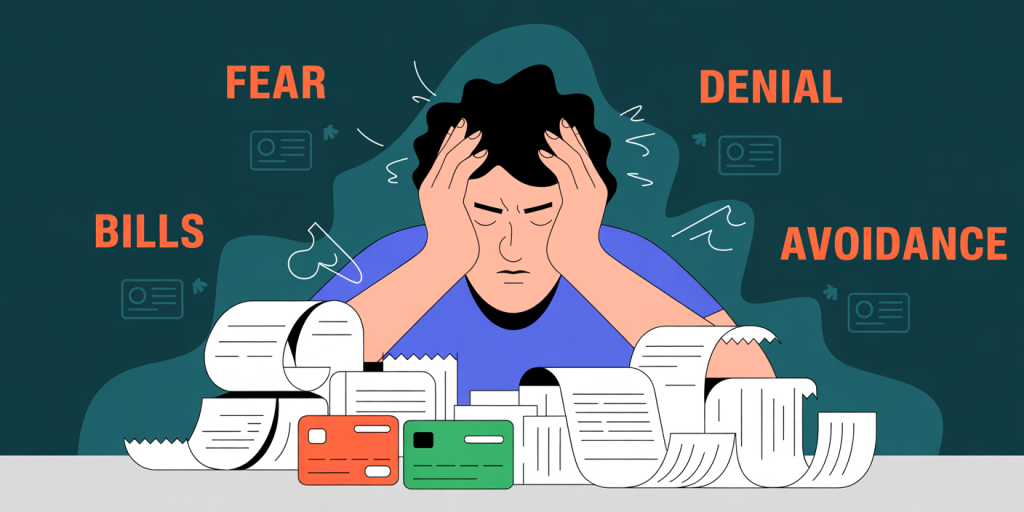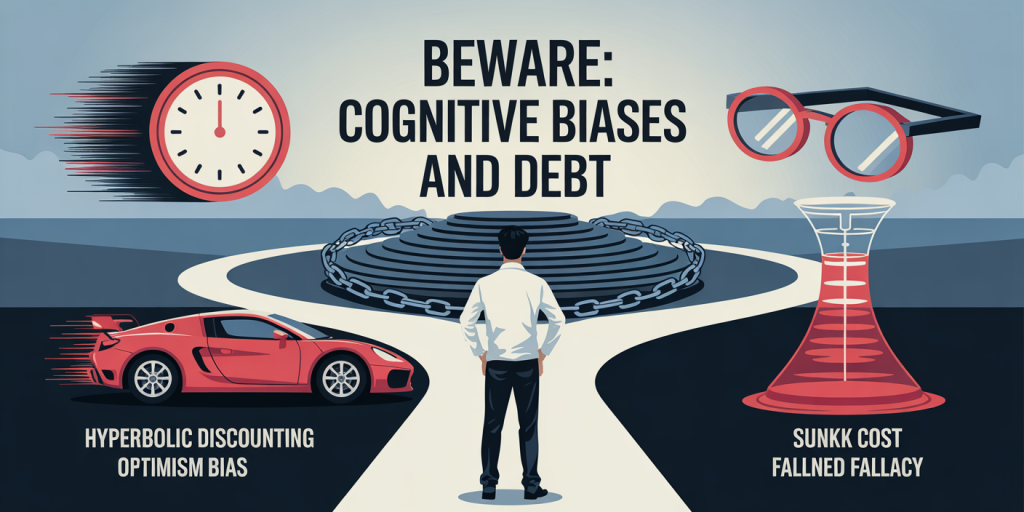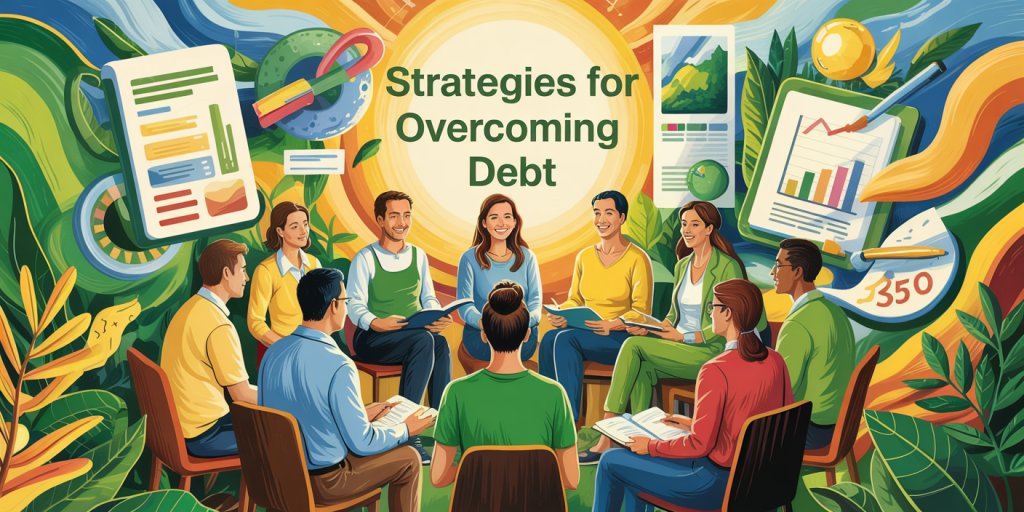Psychology Behind Debt: Why People Stay in Debt and How to Overcome It
Anúncios
Debt is an issue that affects millions worldwide, transcending demographics, income levels, and cultural backgrounds. Despite its prevalence, many individuals struggle to escape debt cycles, often wondering why they remain trapped even when they recognize the detrimental impact on their financial stability and mental health. Understanding the psychological underpinnings of debt behaviors provides crucial insights into why people stay in debt and offers actionable strategies for overcoming it.
The Emotional Roots of Debt: Fear, Denial, and Avoidance

Debt is not merely a financial condition; it is deeply intertwined with emotional factors. Fear plays a significant role in how people manage — or fail to manage — their debt. For instance, fear of facing the full scale of financial obligations can lead to procrastination in addressing debt issues. A 2022 survey by the National Endowment for Financial Education found that 60% of respondents admitted to avoiding bills or collections calls because they felt overwhelmed by the amount owed.
Anúncios
Denial compounds these fears. Individuals can remain in denial about debt severity, convincing themselves that they will regain control eventually. This denial is often a defense mechanism against the stress and shame associated with indebtedness. Consider the case of Sarah, a 34-year-old marketing consultant who lived with credit card debt exceeding $15,000. She ignored monthly statements for over a year, believing that her income increase would naturally resolve the debt — a belief that delayed effective action and allowed fees and interest to accumulate.
Avoidance behaviors, such as neglecting budgeting or financial planning, reinforce the cycle. People may also avoid seeking help, fearing judgment or stigma, which prevents them from accessing valuable resources for debt management. Emotional distress tied to debt, including anxiety and depression, further inhibits rational decision-making and proactive steps towards repayment.
Anúncios
Cognitive Biases Influencing Debt Accumulation
Beyond emotions, cognitive biases deeply influence debt accumulation and persistence. One powerful bias is hyperbolic discounting — the tendency to prefer smaller, immediate rewards over larger, future gains. This explains why individuals often prioritize present consumption over future financial health. For example, a person might choose to buy a luxury item on credit today rather than saving to buy it outright later, even if the latter would be financially wiser.
Another relevant bias is optimism bias, where individuals underestimate the probability of negative events such as falling into financial hardship. This bias can prompt risky financial behaviors, including overusing credit cards or taking on loans without fully assessing repayment capacity. A case study involving college students found that 70% believed their chances of facing serious debt problems were “quite low,” despite statistics indicating a high likelihood of graduating with substantial student loan debt.
The sunk cost fallacy also impacts debt behavior. Individuals may continue to borrow more because they feel invested in prior debt decisions, believing that it would be wasteful to abandon their financial plans. This thinking makes it difficult to stop accumulating debt even when it becomes unsustainable.
| Cognitive Bias | Description | Impact on Debt Behavior | Example |
|---|---|---|---|
| Hyperbolic Discounting | Preference for immediate rewards over future benefits | Prioritizing instant gratification via credit | Buying luxury goods on credit despite better alternatives |
| Optimism Bias | Underestimating the risk of negative outcomes | Ignoring potential financial troubles | Assuming debt repayment will be easy post-graduation |
| Sunk Cost Fallacy | Continuing investment in past decisions | Borrowing more to justify existing debt | Taking additional loans to pay off earlier debts |
Social and Cultural Factors Maintaining Debt Cycles

Social pressures and cultural norms significantly influence why people remain in debt. Consumer culture often equates material possessions with success, reinforcing spending tendencies beyond means. Social media platforms exacerbate this phenomenon by promoting lifestyles centered on consumption and immediate gratification. For example, a study published in the Journal of Consumer Research revealed that individuals exposed to luxury lifestyle images on social media were 20% more likely to make impulsive purchases using credit.
Family upbringing also matters. In households where financial education is limited, children might not learn healthy money management skills, making them susceptible to debt in adulthood. A report by the Financial Industry Regulatory Authority (FINRA) indicated that only 17 states in the U.S. require high school students to take a personal finance course, highlighting a systemic gap in financial literacy education.
Peer influence can encourage debt through competitive consumption or shared norms around credit usage. For instance, millennials and Gen Zers often report using credit cards to keep up with friends’ spending habits on experiences like dining out or travel, reinforcing ongoing debt cycles.
Strategies for Overcoming Debt: Leveraging Psychology for Change
To break free from debt, addressing the psychological barriers is paramount alongside financial strategies. One effective approach is adopting mindfulness and emotional regulation techniques to reduce anxiety and improve financial decision-making. Techniques like journaling financial goals or structured reflection on spending impulses have shown positive outcomes in credit counseling programs.
Another important method is restructuring cognitive biases. Behavioral interventions such as commitment devices or “implementation intentions” help individuals make future financial choices more rational. For example, committing to a savings goal by automating transfers from checking to savings can counteract impulsive spending driven by hyperbolic discounting.
Seeking social support also proves critical. Joining debt support groups or seeking financial coaching provides accountability and diminishes stigma associated with indebtedness. Studies show that individuals receiving peer support during debt repayment are 30% more likely to meet their financial goals.

On the practical side, budgeting with clear, attainable milestones builds confidence and momentum. Tools like the “debt snowball” method — paying off smallest debts first — leverage psychological rewards of quick wins to sustain motivation. In contrast, the “debt avalanche” method, focusing on highest-interest debts, optimizes financial efficiency but requires stronger self-discipline.
| Debt Reduction Method | Psychological Benefit | Financial Impact | Suitable For |
|---|---|---|---|
| Debt Snowball | Quick wins boost motivation | May cost more interest over time | Individuals needing motivation and confidence |
| Debt Avalanche | Focus on minimizing total interest paid | Faster debt reduction and cost-saving | Those disciplined and focused on efficiency |
| Automated Savings | Reduces impulsivity and enforces discipline | Builds emergency fund and reduces new borrowing | People struggling with impulsive spending |
| Peer Support Groups | Accountability and reduced stigma | Increased likelihood of meeting repayment goals | Individuals needing emotional and social reinforcement |
Real-Life Case Studies: Lessons Learned
Two contrasting cases illustrate the impact of psychological factors on debt resolution. John, a 45-year-old engineer, struggled with $50,000 in credit card and medical debt for years. Initially overwhelmed and in denial, John sought help from a financial advisor who introduced cognitive-behavioral techniques alongside debt restructuring. By acknowledging his anxiety and setting small payment goals, John regained control and fully repaid his debt within three years.
Conversely, Maria, a 29-year-old freelance graphic designer, remained trapped in $20,000 of personal loans despite increasing income. Her primary challenge was social pressure and optimism bias; she continuously borrowed to finance lifestyle upgrades to “keep up” with peers. Only after participating in a financial literacy course and joining a peer support group did Maria change her mindset, prioritize essentials, and systematically payoff her debt.
These examples emphasize how psychological awareness combined with targeted strategies can restore financial health.
Future Perspectives: Toward Psychological Financial Wellness
As technology evolves, fintech solutions integrating psychology and behavioral economics are redefining debt management. Apps employing AI to provide personalized spending feedback and nudges have already shown effectiveness in reducing impulsive credit use. According to a 2023 report from Deloitte, 45% of consumers prefer apps that offer emotional and behavioral financial support along with traditional budgeting tools.
Financial education reforms focusing on the psychology of money—encompassing emotional management, cognitive biases, and social factors—are gaining traction. Governments and institutions are recognizing that numerical literacy alone is insufficient without addressing psychological impediments.
The future will likely see greater collaboration between psychologists, financial planners, and technologists to develop holistic debt management programs that empower individuals not only to manage money but to master their relationship with it. Ultimately, fostering psychological financial wellness will be essential for sustainable debt reduction and improved life outcomes globally.
In summary, understanding the psychology behind debt provides vital insights into why many people remain in debt despite negative consequences. Fear, denial, cognitive biases, and social influences form a complex web that traps individuals in debt cycles. However, by applying psychological principles such as emotional regulation, restructuring cognitive biases, social support, and tailored financial strategies, debt can be effectively overcome. The integration of psychological insights in future financial education and technology will pave the way for more sustainable debt solutions and healthier financial lives.



Post Comment